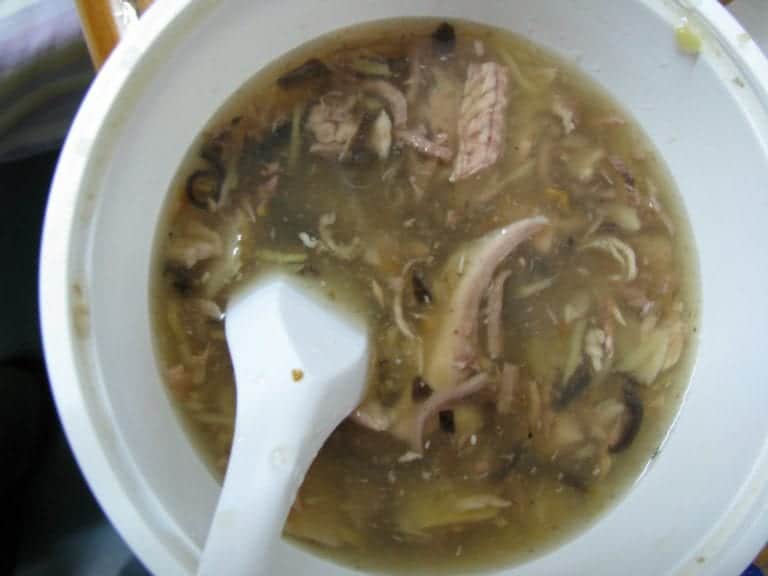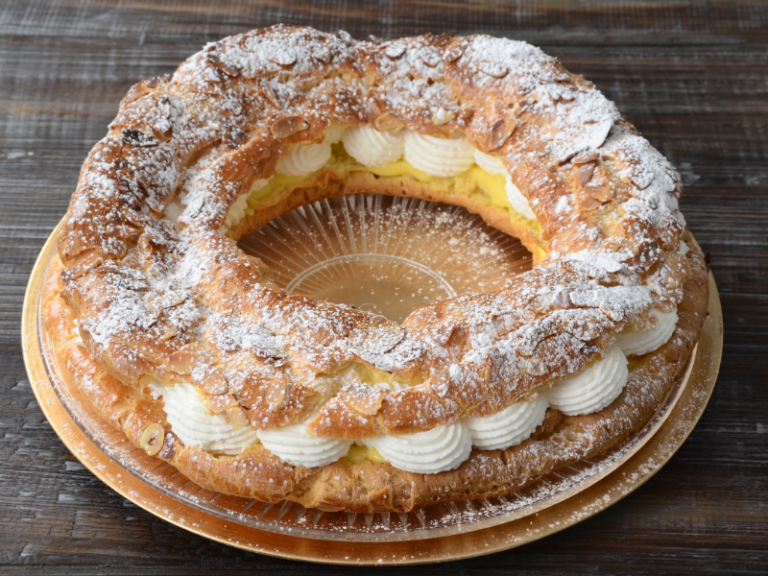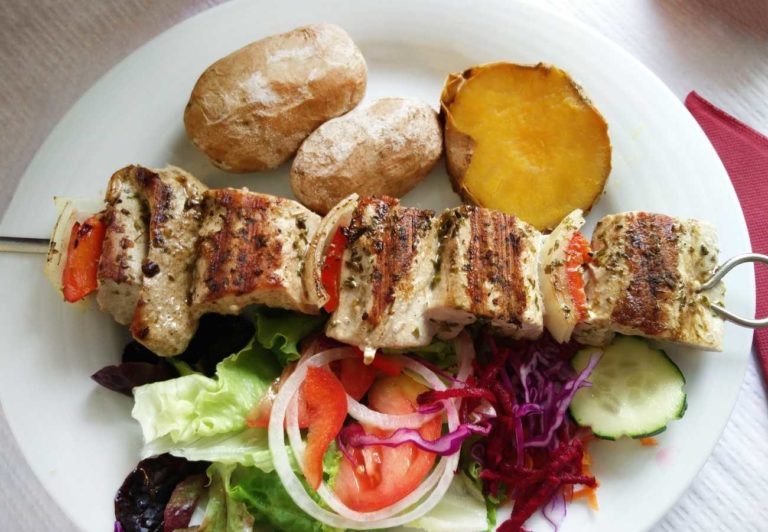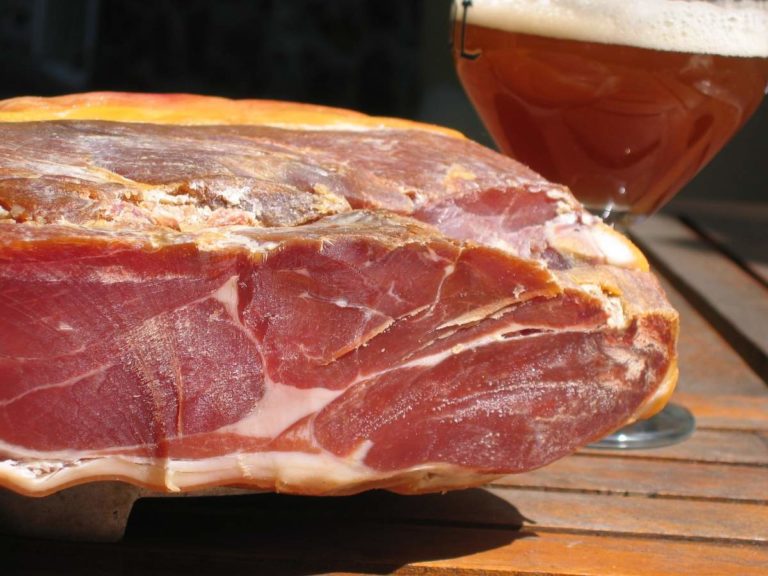Montenegrin Food: 12 Traditional Dishes of Montenegro
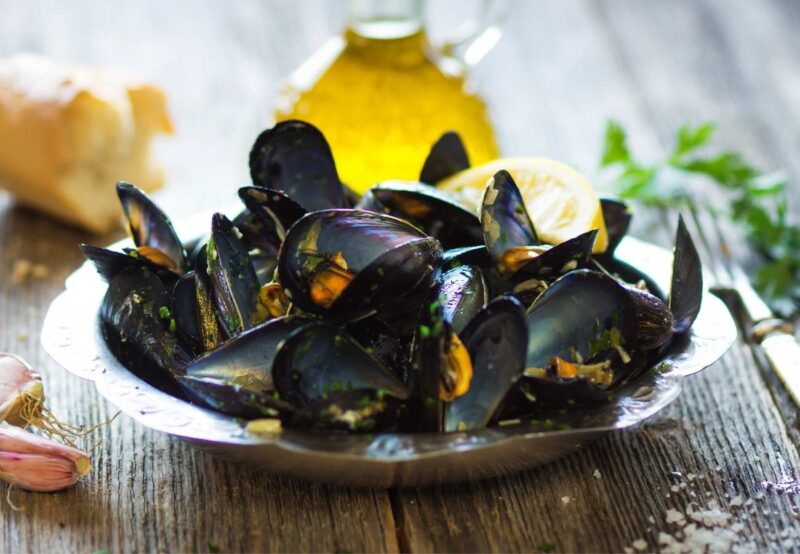
Montenegro is a country located in South-eastern Europe, a part of the Balkans situated on the coast of the Adriatic Sea. The country is bordered by Serbia, Bosnia and Herzegovina, Kosovo, Albania, Croatia, and also shares a maritime boundary with Italy. Montenegro is best known for its mountainous hinterland which perfectly nestles its deep canyons, its beautiful rivers, glacial lakes and primeval forest.
The population of Montenegro is made up of different ethnicities including Montenegrins, Serbs, Bosniaks, Albanians and Croats. The country’s cuisine is highly influenced by its geographic location, extensive history and traditions.
Montenegrin food is somewhat a blend of Mediterranean and Eastern European cuisines, especially from countries including Italy, Turkey, the Byzantine Empire/Greece and Hungary. The food in the country also differs geographically, with seafood dominant in the coastal regions and beef or pork dishes more widely consumed in the northern highland area.
Many Montenegrin dishes consist simply of meat (beef, chicken, pork or lamb) with vegetables, potatoes or fries and a sauce or gravy. Similar to the cuisines of Eastern European countries, dishes can sometimes be criticised for being bland, but they can be hearty and filling during long, cold winters.
Kačamak With Kajmak (Balkan Porridge)

Kačamak is prepared by cooking a porridge using cornmeal and potatoes. On top of the kačamak, kajmak is added (a traditional Montenegro cheese). To finish the dish off, a generous blob of sour milk or yogurt is placed.
Considered to be a staple dish of the Montenegrin cuisine, kačamak once was a peasant’s food, representing the Montenegrin fight against poverty. However, today this delicacy is consumed throughout the country by people from all walks of life.
Njeguši Prosciutto

Njeguši Prosciutto is a slow-cooked dish where the pig’s hind legs are covered in salt for about three weeks. The meat is hung to dry for another three weeks and then smoked for the next four months.
The origin of this dish is believed to have been in the small village of Njeguši. The dish is generally accompanied by fresh bread or platters, usually containing Montenegro cheese, olives, grapes and figs.
Brav u Mlijeku (Lamb in Milk)
Brav u mlijeku is a traditional dish consisting of lamb gradually braised in milk and is accompanied by root vegetables (such as carrots and fennel), rosemary, garlic, parsley and seasoning.
This dish is traditionally prepared in a bell-shaped cooking pot (or sac) over low coals and is often eaten in the highlands of northern Montenegro. A staple dish in Montenegro, Brav u mlijeku is typically eaten with big chunks of crusty bread.
Buzara
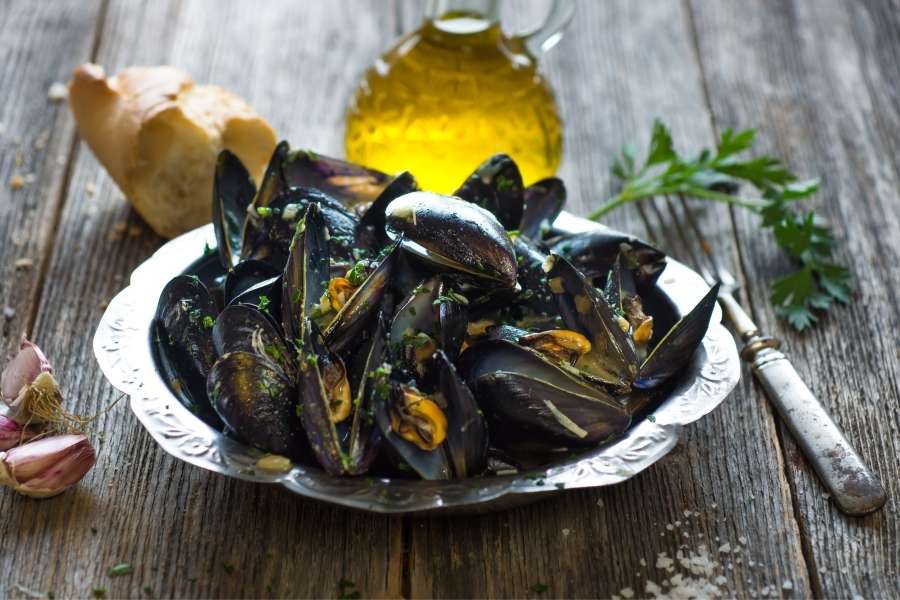
Buzara is a traditional garlic seafood dish (generally containing prawns, shrimp, clams or squid) prepared in either a red or white wine based sauce. Other ingredients include tomato juice, olive oil and parsley.
This savoury dish is widely consumed along the entire coastal region of Montenegro. It is considered a perfect dish to consume on a summer evening with friends and family.
Cevapi
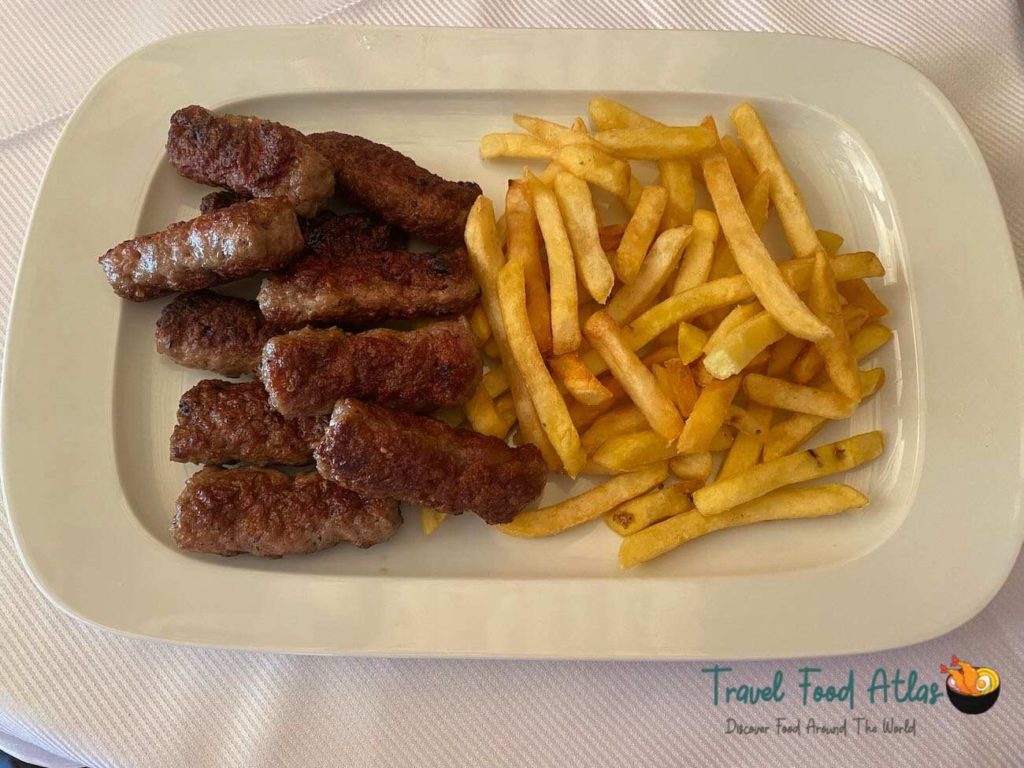
Cevapi are small patties of spiced meat, typically in a sausage shape, prepared by skewering pork, lamb or chicken and then grilling it with onions or peppers. Locals can also be seen hand-shaping the meat, sometimes into rustic meatballs, and then consuming them along with a tomato and cucumber salad.
Cevapi originates from Serbia and is generally consumed with different kinds of dips, fries or a warm Mediterranean flatbread.
Burek
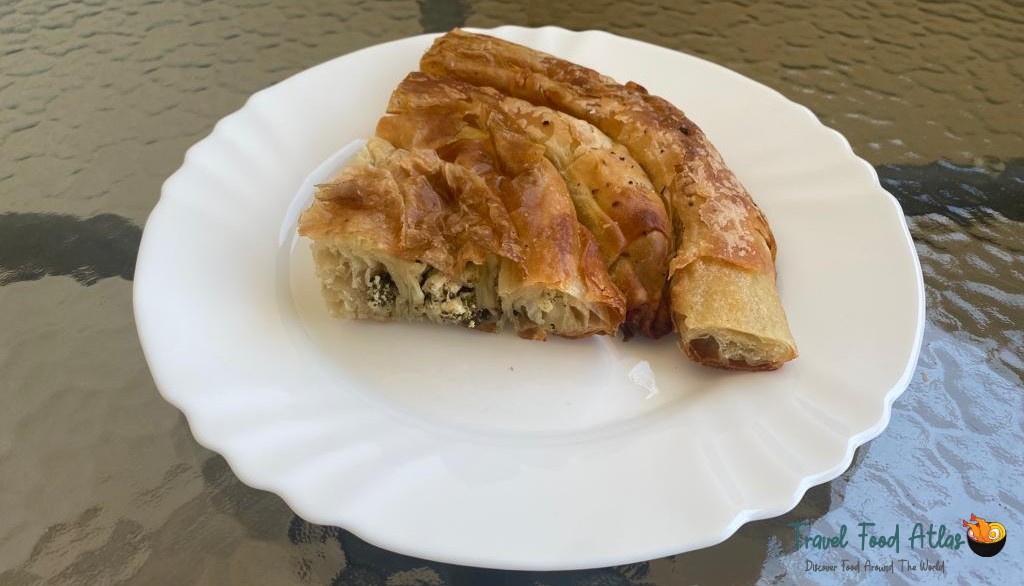
Burek is a pastry prepared using a thin, flaky dough like filo that is popular in many Balkan and Middle Eastern countries. It consists of a variety of fillings, such as mincemeat, cheese, mushrooms, spinach or potatoes. Generally consumed for breakfast or as an evening snack, burek is typically served in buttery spirals or golden wedges.
Bureks are generally baked, but some varieties require them to be fried, and can be consumed both hot and cold. Available at almost all bakeries in Montenegro, it is believed to be the perfect accompaniment to a warm cup of coffee.
Palačinke (Pancakes)

Palačinke are Montenegrin pancakes filled with chocolate, sugar, banana, nuts or jam. However, the jam is especially prepared by locals using all sorts of different fruits. Similar to the French crepes, this Montenegrin delicacy is served rolled like cigars instead of folded triangles.
Although, palačinke is of Greco-Roman origin, it is a widely consumed snack in Montenegro. Found throughout the country, it is generally sold by street vendors. Palačinke come in a variety of flavours, including savoury fillings like mushrooms, cheese, ham and chicken.
Sarma
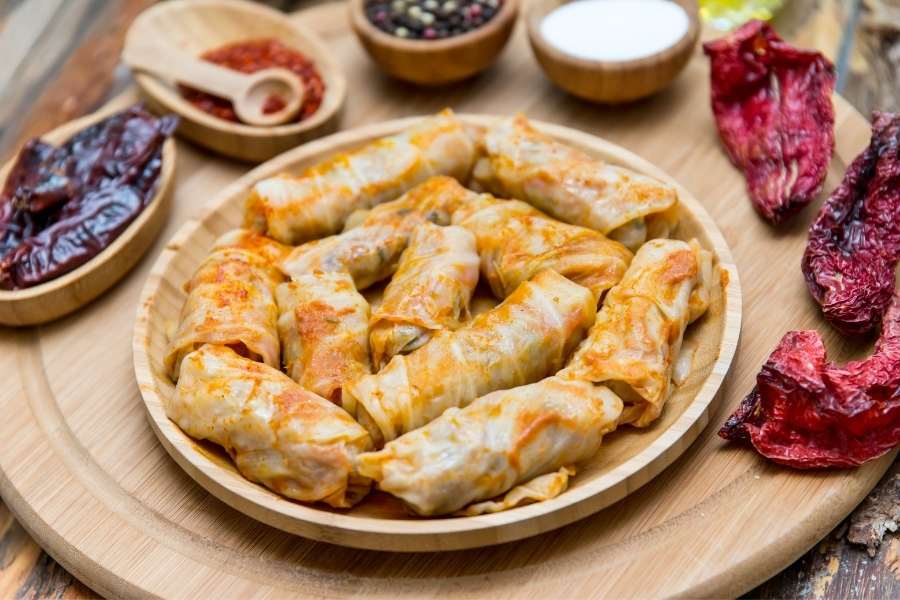
Sarma is a dish prepared by stuffing a cabbage leaf with a combination of minced meat and rice. It is then cooked or roasted, as per the recipe. Consumed in many Slavic countries, a rare vegetarian variant of this dish includes only rice and not meat in the filling.
In order to enhance the flavour of the dish, various spices are added to the stuffing. Some people also add vegetables, such as minced onions.
Generally consumed during lunchtime, there are many variations of this dish that use other leaves instead of cabbage for wrapping.
Cicvara
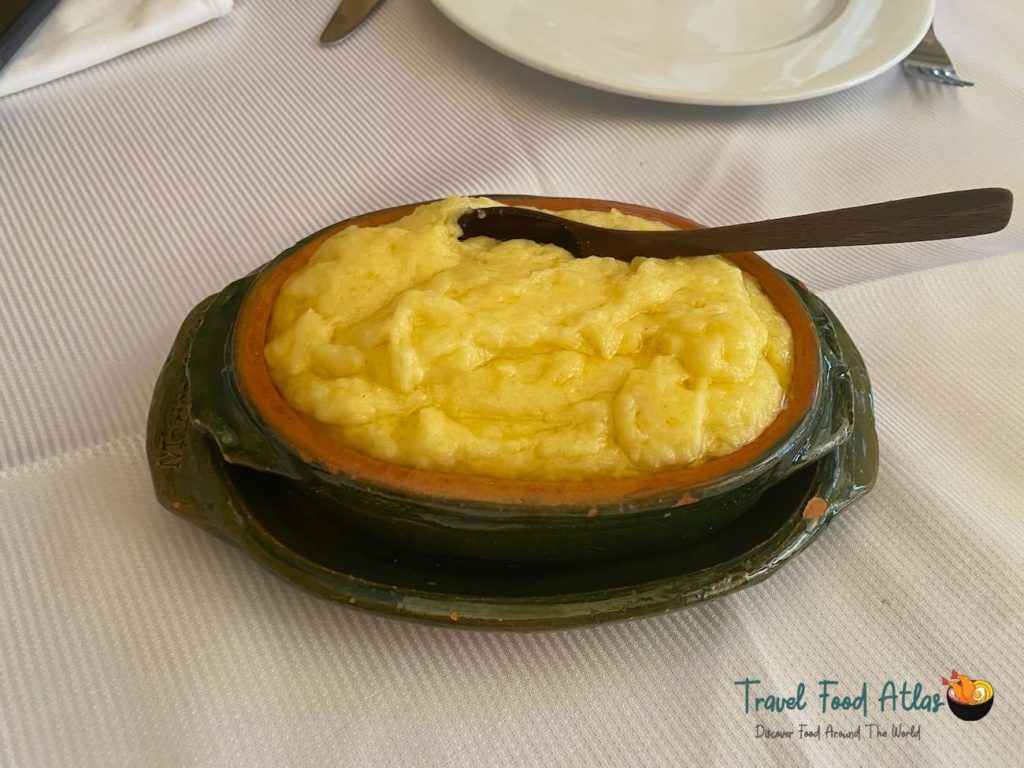
Cicvara is a starter or side dish prepared using cornflour, milk, cheese, and kaymak. Cheese plays a significant role in determining the aroma of the dish. It is believed that the older the cheese is, the stronger and better the taste of the finished dish will be.
Cicvara is a highly-caloric dish and is generally served for breakfast. Although this dish is quite simple, it requires a lot of time and effort to prepare.
Priganice
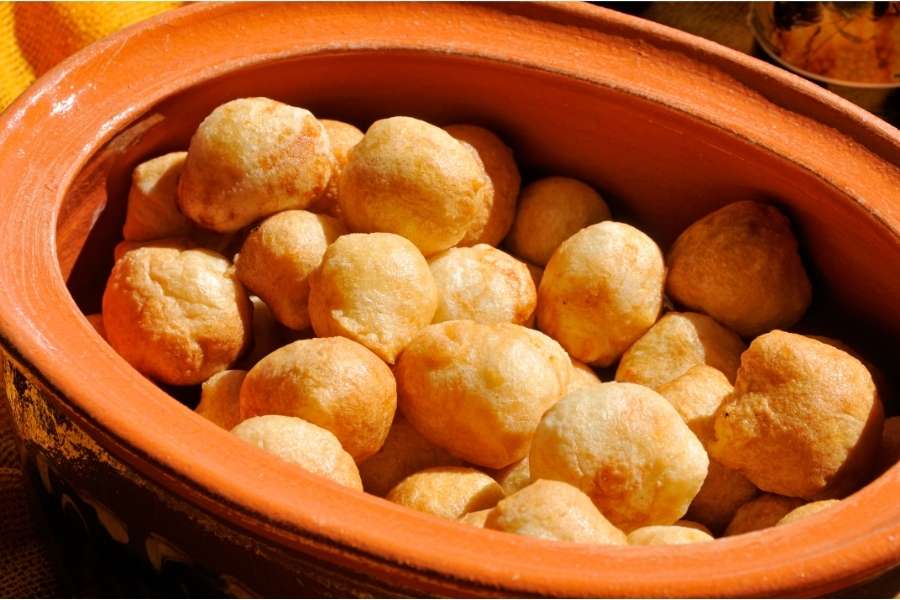
Priganice are traditional Montenegrin fried dough balls prepared using flour, water, oil, salt, yeast and sugar. Occasionally, yogurt or rajika are also added to the dish so that the dough doesn’t absorb much oil while it is frying.
It is generally consumed with homemade fresh cheese, kaymak, honey, fruit jams, smoked meat, prosciutto or vegetables. People can also be seen adding various spices and vegetables to the dough prior to baking it, although the traditional version of the dish doesn’t include any such accompaniments.
Priganice are generally consumed for breakfast or as a snack during the day.
Sataraš
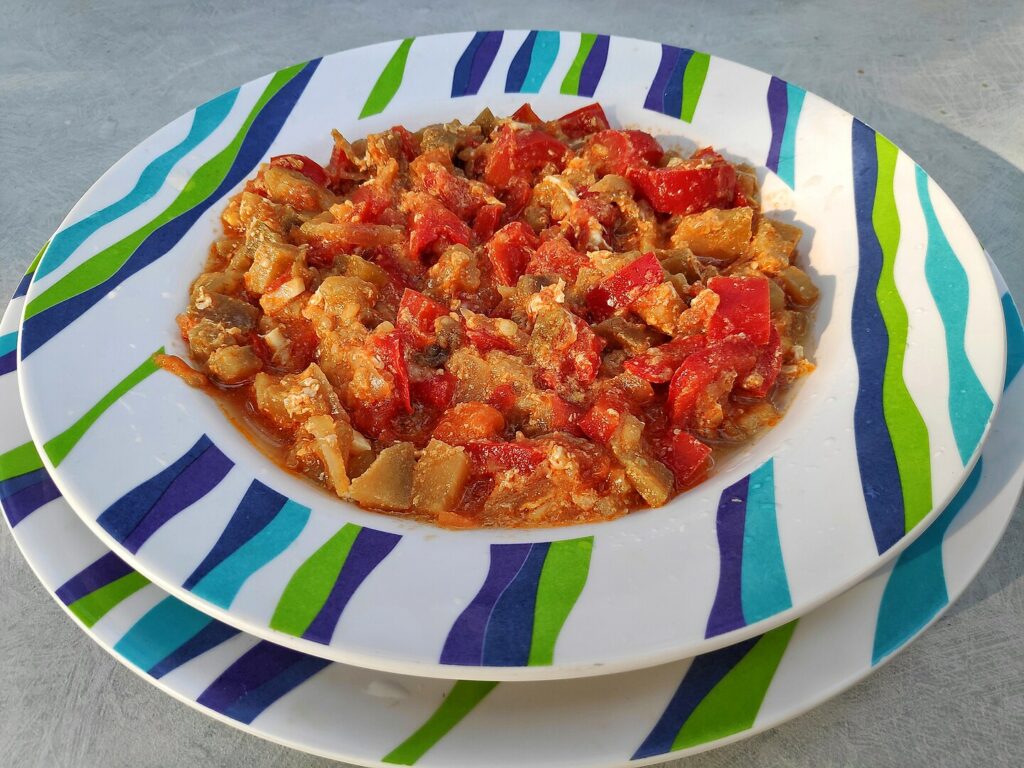
Sataraš is a traditional Balkan stew made with tomatoes, onions and peppers. They are first sautéed in oil, lightly seasoned then gently cooked into a chunky stew. It is served as a side or main dish.
Sataraš can be eaten as an accompaniment for meat or with starches like bread or eaten alone as a stew. When prepared for breakfast, it is topped with eggs.
Gibanica
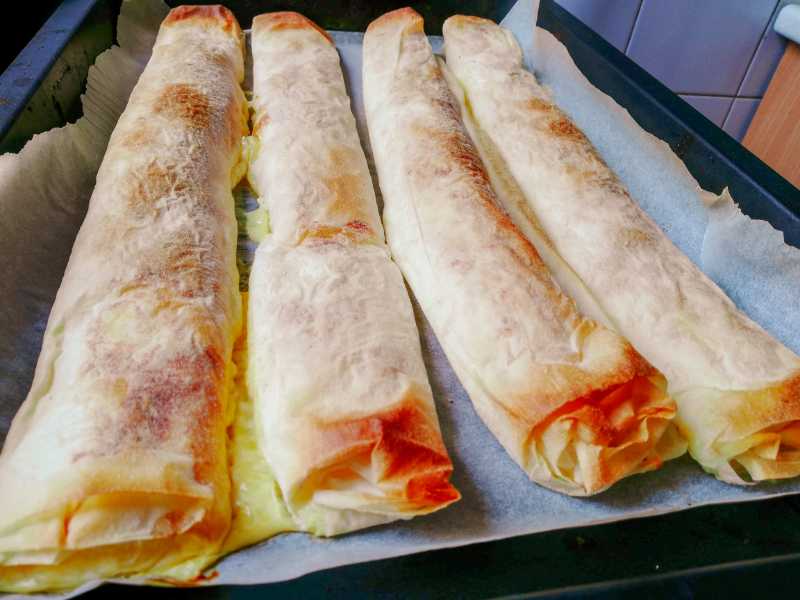
Gibanica is a traditional wheat flour pastry filled with soft cheese. The filling may be a soft spreadable cheese such as cottage cheese or soft crumbly cheese like feta. The easiest preparations use ready-made phyllo dough, but it also made with freshly rolled dough and baked.

